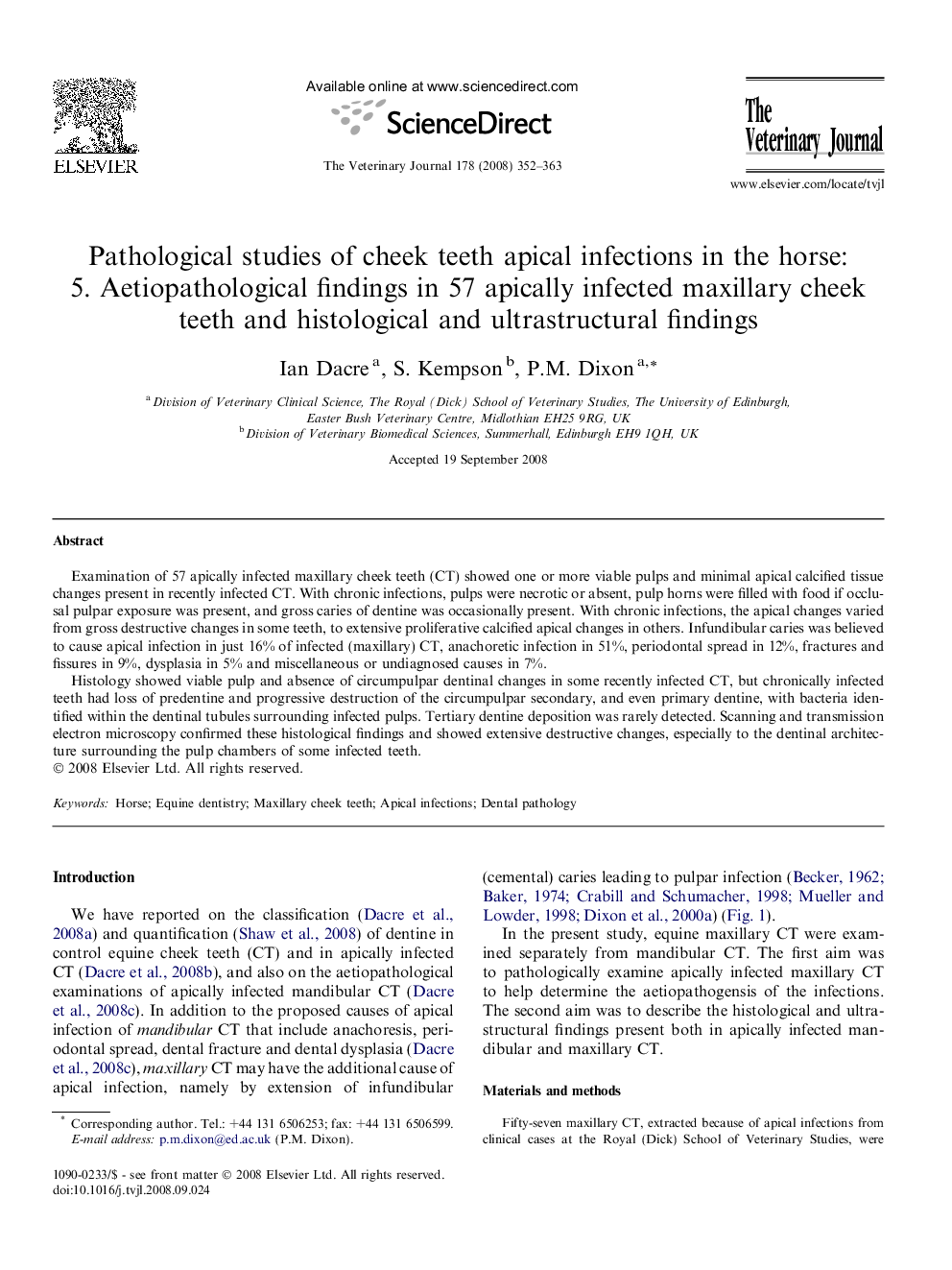| Article ID | Journal | Published Year | Pages | File Type |
|---|---|---|---|---|
| 2465801 | The Veterinary Journal | 2008 | 12 Pages |
Examination of 57 apically infected maxillary cheek teeth (CT) showed one or more viable pulps and minimal apical calcified tissue changes present in recently infected CT. With chronic infections, pulps were necrotic or absent, pulp horns were filled with food if occlusal pulpar exposure was present, and gross caries of dentine was occasionally present. With chronic infections, the apical changes varied from gross destructive changes in some teeth, to extensive proliferative calcified apical changes in others. Infundibular caries was believed to cause apical infection in just 16% of infected (maxillary) CT, anachoretic infection in 51%, periodontal spread in 12%, fractures and fissures in 9%, dysplasia in 5% and miscellaneous or undiagnosed causes in 7%.Histology showed viable pulp and absence of circumpulpar dentinal changes in some recently infected CT, but chronically infected teeth had loss of predentine and progressive destruction of the circumpulpar secondary, and even primary dentine, with bacteria identified within the dentinal tubules surrounding infected pulps. Tertiary dentine deposition was rarely detected. Scanning and transmission electron microscopy confirmed these histological findings and showed extensive destructive changes, especially to the dentinal architecture surrounding the pulp chambers of some infected teeth.
